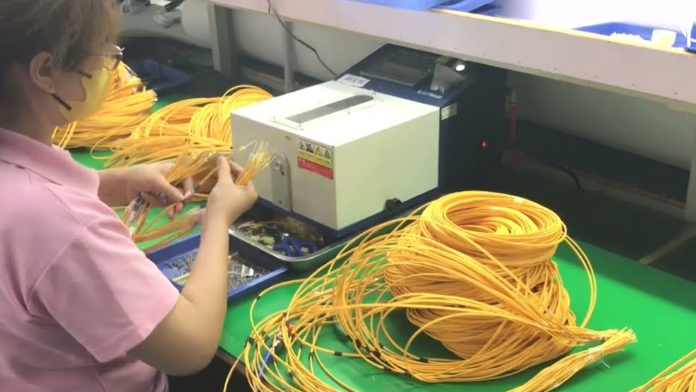Patch cables are essential components of networking infrastructure, acting as key connectors between various network devices and facilitating data transmission. These connections, also known as patch cables or patch leads, are essential for maintaining smooth connectivity across networks of all kinds, from modest office settings to enormous data centers.
Patch cord quality is critical for the reliability and efficiency of network operations. High-quality patch cords are designed to provide optimal signal transmission, withstand daily use, and interface smoothly with a variety of networking equipment. As a result, organizations must prioritize quality when selecting patch cords to maintain continuous connectivity and optimize network infrastructure performance.
Patch cord manufacturers are responsible for creating these critical components to meet demanding requirements while balancing signal integrity, longevity, and compatibility. Patch cord Manufacturers duty goes beyond basic production; they are network performance guardians, serving as the foundation for modern communication and information sharing.
The Role of Patch Cord Quality in Network Performance
The quality of every component is important in the complex ecology of networking infrastructure, where data flows at the speed of light and connectivity is critical. Patch cords stand out as critical components with a substantial impact on network performance. In this article, we will look at why patch cord quality is so important for guaranteeing optimal network performance.
Reliability
Network performance is fundamentally dependent on reliability. Patch cables are the ultimate interface between active networking equipment, such as switches, routers, and servers, and end-user devices. Any disruption or breakdown in the patch cable can cause network downtime, impacting productivity, communication, and vital company processes. High-quality patch cords are designed to withstand regular use, reducing the likelihood of intermittent connectivity issues or full failures.
Signal Integrity
The integrity of signals transmitted over the network is dependent on the quality of patch cables. Inferior patch cords can cause signal degradation. Quality patch cords, on the other hand, are built with precise tolerances, shielding, and insulation to keep signals intact across extended distances and under changing climatic conditions. This ensures that data packets arrive at their destination intact and without degradation, hence maintaining the network’s reliability and performance.
Bandwidth and Data Transmission Speeds
Patch cords must keep up with network evolution to meet increasing bandwidth needs and data transfer speeds. High-quality patch cables are designed to accommodate the most recent networking protocols, which provide increased bandwidth and data rates. Quality patch cords reduce signal loss and impedance mismatches by adhering to strict production standards and employing high-quality materials, allowing networks to achieve maximum throughput and performance.
Flexibility and Durability
Network environments are dynamic, undergoing ongoing configuration, expansion, and maintenance. Patch cords are bent, flexed, and inserted repeatedly while network administrators make changes or solve connectivity difficulties. Low-quality patch cords may not be flexible or durable enough to handle these obstacles. High-quality patch cables, on the other hand, are made of durable materials, have reinforced connectors, and have strain relief features to ensure longevity and reliability in demanding network situations.
Interoperability
Interoperability is critical in heterogeneous network settings, which include a wide range of networking equipment from many suppliers. Patch cables must function flawlessly with switches, routers, servers, and other network equipment to ensure compatibility and peak performance. Quality patch cords are rigorously tested to satisfy industry standards and regulations. This compatibility assures seamless operation while avoiding compatibility concerns that can affect network performance.
Reduced Maintenance Costs
Poor-quality patch cords can cause frequent network disruptions, troubleshooting, and equipment replacements, resulting in higher maintenance expenses and downtime. Investing in high-quality patch cords may have higher initial costs, but it can result in significant long-term savings by minimizing downtime. Quality patch cords provide peace of mind by ensuring that the network infrastructure is created with dependable components that ensure constant performance and reliability.
Sum Up
The quality of patch cords is crucial to the performance, reliability, and lifetime of network infrastructure. Quality patch cords are essential components in the construction of durable and resilient networks since they ensure signal integrity and data transfer speeds while also facilitating interoperability and future scalability. Organizations may reduce the risk of network disruptions, optimize performance, and maximize the return on their networking investments by putting quality first when purchasing patch cords.












